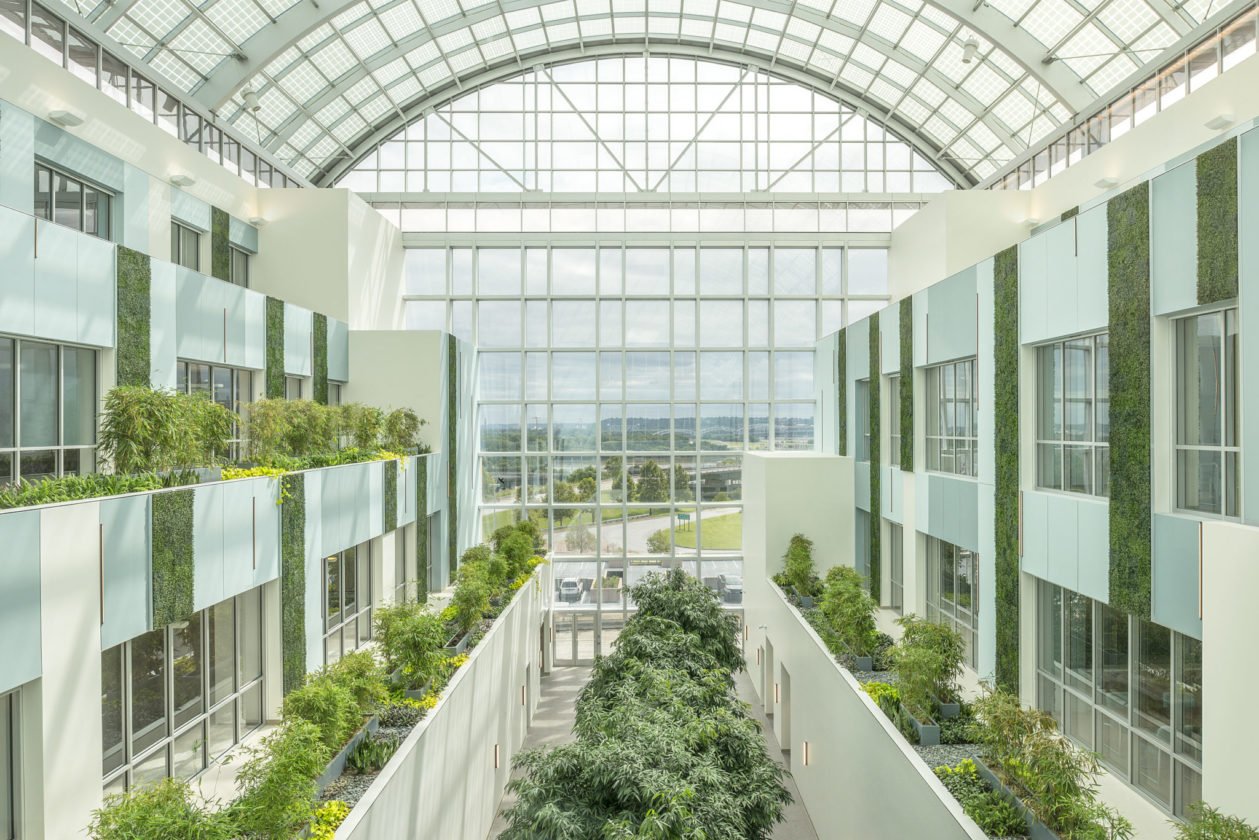Standing at one end of the University of Kansas Health System’s Strawberry Hill Behavioral Health Hospital’s dynamic atrium, it’s possible to forget you’re even standing in a health care environment at all. There are living green walls, beautiful plants and shrubbery, boundless natural light, stunning views of the nearby skyline and patients are just footsteps away from spaces for music, art therapy, fitness and more.
The Strawberry Hill Behavioral Health Hospital is one of several cutting-edge mental and behavioral health care facilities boldly reshaping its typology. While historical approaches to mental health hospitals often isolated these facilities away from town centers and behind fences, today’s facilities are focused on community integration, access to nature, shared-use resources, natural light, music, public art, positive patient and staff experiences and more.

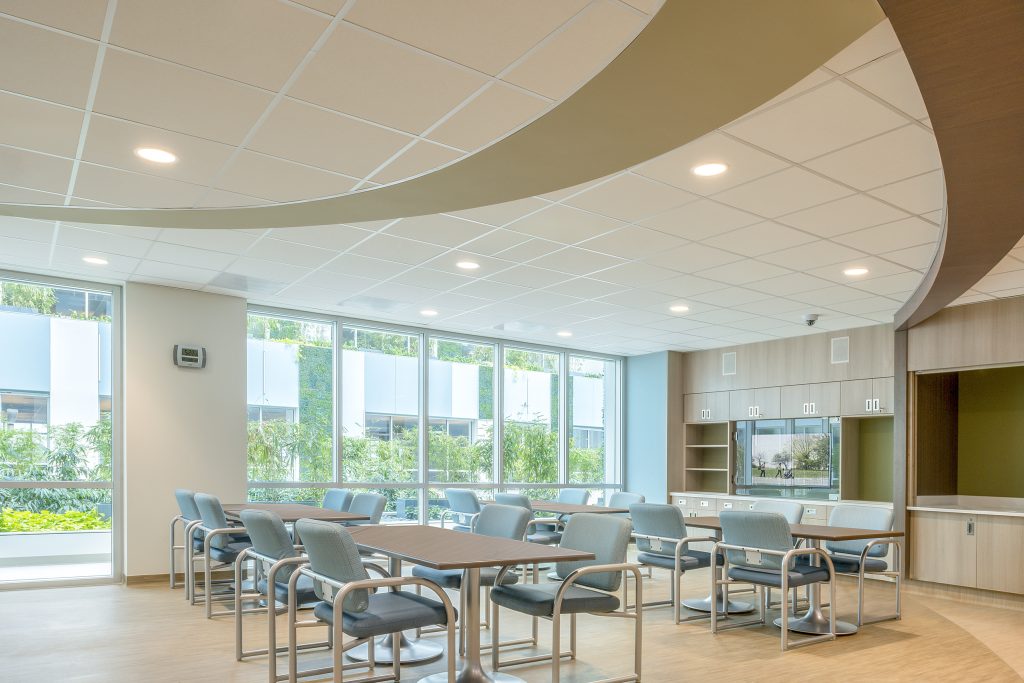
While facilities have been trending in this direction over the past decade, their relevance is especially critical at this moment. Foremost, there is a general reduction in stigma around mental health occurring in society, leading to more people seeking help and treatment.
Additionally, the need for mental health care may never have been greater than right now. The National Alliance on Mental Illness (NAMI) reports that 1 in 5 adults and 17 percent of youth aged 6-17 experience mental illness in a given year. Those numbers have increased during the COVID-19 pandemic, and there are not enough care facilities to help those who need inpatient treatment. That means some patients never receive treatment. Others, who should be in well-designed treatment facilities like the Strawberry Hill Hospital, can fall through the cracks and end up incarcerated as opposed to safely admitted.
“I believe a silver lining to this pandemic is the shift in how we talk about mental health, and there appears to be a greater willingness to discuss the importance of mental health care,” said Harsh Trivedi, MD, MBA, president and CEO of Sheppard Pratt, America’s largest private, nonprofit mental health service. “The pandemic is also changing how we can provide care. We are seeing a loosening of restrictions on telehealth, we are seeing renewed focus on ensuring patients are treated with dignity and respect; there are exciting possibilities ahead.”

So, just how exactly are these new mental health care facilities moving in positive directions? There are numerous ways:
Community Integration and Impact
There’s great focus on ensuring today’s leading mental health care facilities are part of the community. This begins with locating the facilities in the heart of communities to reduce stigma, ensure easier access due to proximity and/or public transit and increase opportunities for engagement and integration.
A great example of embedding a health care facility in the heart of a community is the Los Angeles County + University of Southern California (LAC+USC) Restorative Care Village. The new care center is positioned on a busy intersection in L.A. and offers numerous courtyard spaces for patient and public access. Set to open later this spring, the Restorative Care Village incorporates a large public art mural, further making the care facility a beacon for the community.
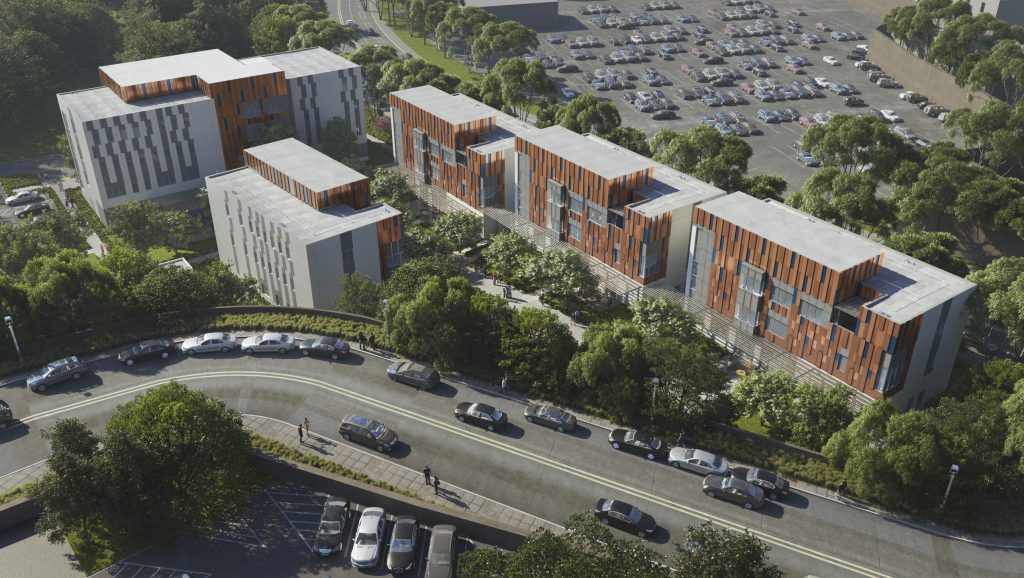
The Strawberry Hill Hospital is also a strong example. The mental health hospital is part of an ongoing strategy to revive a previously downtrodden area of Kansas City, Kan. The project has created jobs, catalyzed commercial retail development and boosted the economy, all while elevating public awareness and care around mental health.
Embracing the Natural Environment
Living green walls, public courtyards, extensive daylighting—these are now the norm for effective mental and behavioral health care facilities. Sheppard Pratt is set to open a new mental health hospital this year that echoes nature around every corner.
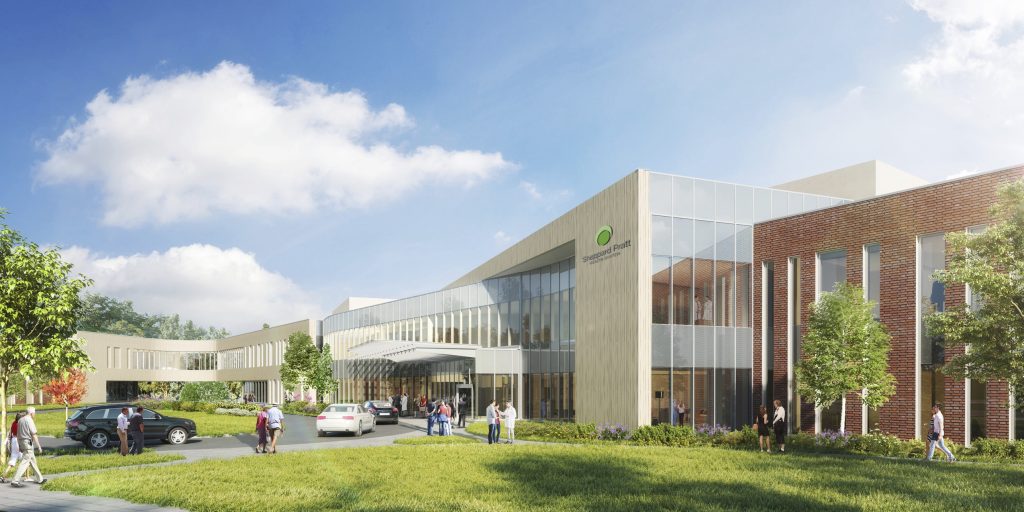
Located on a site originally planned for a business park, the new mental health hospital ensures the vast majority of patient rooms and therapy/activity spaces all face the outdoors with opportunities for extensive natural light. This helps patients and staff capitalize on the healing effects of nature. Outside, there are walking paths, and areas for both respite and socialization, to help further connect people to the outdoors.
Community Resources
More and more, today’s mental and behavioral health spaces are designed for some level of community resource. At baseline, there may be conference spaces and multi-use rooms available for the public to book at certain times. Bolder integrations can include swimming pools that local families can use for swimming lessons or weekend farmers markets during which patients can sell food they’ve grown themselves. All of these efforts help community members realize mental health spaces as community assets for engagement, further reducing stigma for the future
Art Therapy
Art therapy has long been a tool in helping mental and behavioral health care patients. Both ensuring there is artwork in these spaces to enliven them, but also engaging patients in art creation are key aspects for healing. As mental health facilities are designed for increased community integration, this art therapy can extend into the community. Maybe it’s a public art mural like the one at LAC+USC Restorative Care Village. Or maybe an “art walk” extends beyond the hospital into the surrounding neighborhood.
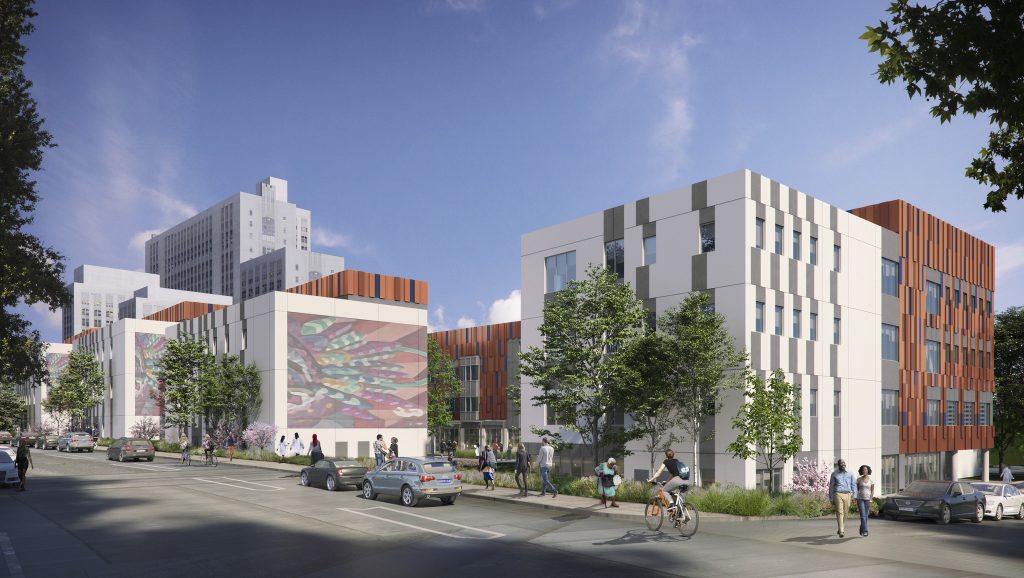
Art is especially impactful in mental health care spaces for children. The Children’s Hospital of Orange County exudes this approach in their recently opened Thompson Autism Center, one of very few dedicated facilities in the U.S. for autistic children and their families.
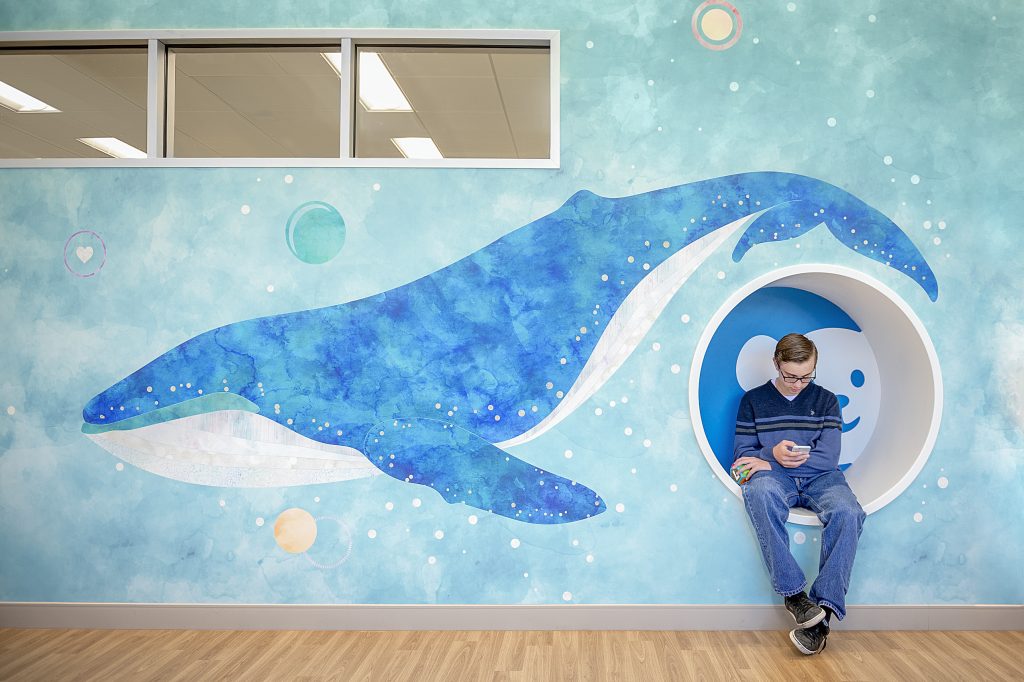
Staff Wellness
Another critical shift in the design of mental health treatment facilities is increased focus on staff wellness. Burnout for health care staff in all fields is a growing issue and design can help. Inherently, the same public integration, access to nature and art helps create better environments for staff. Health systems are amplifying these efforts by also creating staff-only areas for respite and relaxation.
More Impact Ahead?
These dynamic new health facilities truly represent a tipping point for mental health in America. As stigma continues to wane and more people are comfortable seeking help, there are boundless opportunities ahead.
Today, the discussion focuses mostly on how these care spaces can be remarkable, But we also need to think about how mental health care design can infuse our workplaces, schools and more. Already, visionary school districts like Cherry Creek in Denver, Colo. have announced plans to build a mental health care facility for students to access each day. Local governments are approving millions in funding for schools, and employers are recognizing they need to further focus on mental health—there is positive action in every corner of society. This is an exciting shift that should lead to healthier environments where we work, play, learn and live each day.
It’s all the launch of an exciting new era. There’s no disputing the serious need for better mental and behavioral health care in our country, and it’s exciting to see so many health systems across the country rising to the challenge. They’re improving patient lives, strengthening their communities and raising the bar for a brighter future.
Stephanie Vito is a leader in CannonDesign’s Mental and Behavioral Health design practice, dedicated to improving patients and staff lives through design. Her tireless pursuit of excellence while designing for the often-underserved population leads to tremendous impact. Her work has garnered numerous design awards and she has been named a Healthcare Design Rising Star.

